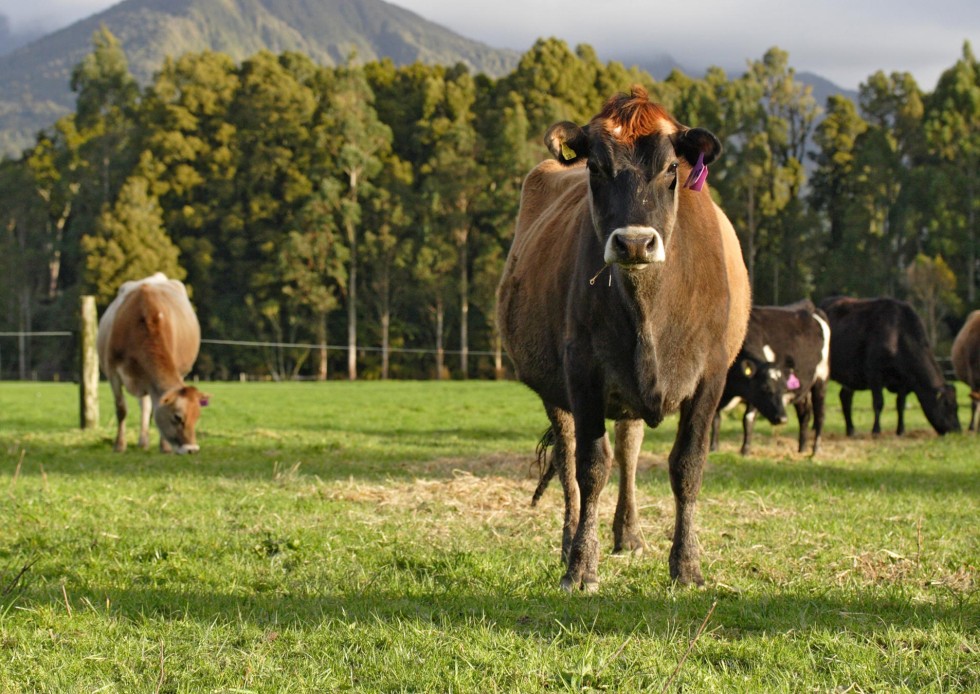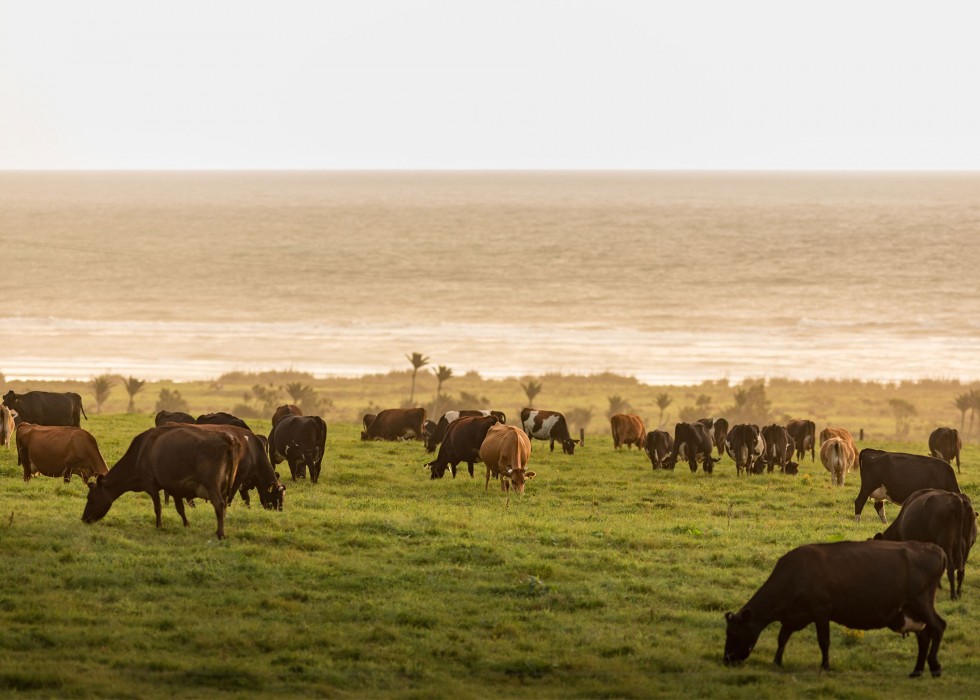Our farmers cows graze free-range, 365 days a year with daily access to pastures. They’re only brought in from pasture for the following reasons:
- Milking (the maximum is twice in a 24-hour period)
- Bad weather
- Regulatory compliance
- Veterinary advice
- Transportation
How does Westgold define ‘grass-fed’?
We define term ‘grass-fed’ as a diet that consists of the following:
- Grasses and other plants cows come across in pasture, including pasture grasses and broadleaf species such as clover, Lucerne and plantain.
- Fodder and cereal crops at the milky stage (the initial stage of grain ripening). Examples include swedes, rape, kale, turnips, fodder beet and similar species.
- Other vegetative species that herds may come across while grazing.
Not included as ‘Grass-Fed’ forage are grains, i.e. wheat, oats, barley, maize, rye and their derivatives, straw, silage and bailage, made from these cereal crops. These are classified as supplementary feed for the purpose of these grass-fed percentage calculations.
Based on the data collected in our annual feed surveys, we are able to calculate how much grass-based feed makes up the total diet of the cows on each of our milk supplier’s farms. These figures help us determine the percentage of Westgold’s milk supply that comes from grass-fed cows.
Because of this, Westgold can confidently substantiate the claim that its products are made from grass-fed milk solids. We can also claim that the majority of its total milk solids production comes from cows on a grass-fed diet.
This can be proven in both qualitative and quantitative terms:
- Qualitative: Westgold’s products can claim to be grass-fed because its supply base consists of cows fed a predominantly ‘grass-fed’ diet, as defined above.
- Quantitative: Westgold has the data to determine the quantitative proportion of grass-based feed consumed by the cows producing the milk solids used in its products.
Based on the Westgold qualitative definition of ‘grass-fed’ and the results from the calculation model used, we can conclude that the majority of Westland’s total milk solids production comes from cows on a grass-fed diet.




